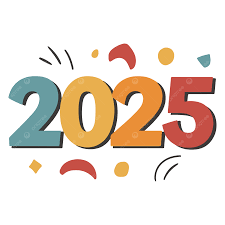Older adults can save tens of thousands of dollars annually by choosing assisted living communities over aging in place in their homes.
Unlike point solutions, Inspiren unifies resident safety, care planning, staffing, and emergency response into a single AI-powered platform.
An artificial intelligence-powered virtual assistant platform for senior living and care providers.

 Five years ago -- this site looked at the state of dementia-related technologies. The more things (the tech offerings) change, the more their purpose and function remain the same. Today there are websites that list gadgetry for managing and living with dementia. There are
Five years ago -- this site looked at the state of dementia-related technologies. The more things (the tech offerings) change, the more their purpose and function remain the same. Today there are websites that list gadgetry for managing and living with dementia. There are  Home care is a labor-intensive business
Home care is a labor-intensive business Tech adoption for older adults is growing... The surveyed ubiquity of technology has led to a belief that it is everywhere it needs to be, with media assumptions about the benefit of smartphones and online tools, ownership of devices, or access to broadband speeds. The majority of older adults now own
Tech adoption for older adults is growing... The surveyed ubiquity of technology has led to a belief that it is everywhere it needs to be, with media assumptions about the benefit of smartphones and online tools, ownership of devices, or access to broadband speeds. The majority of older adults now own  An increasingly tech-oriented society makes older adult tech adoption critical. While many information-based offerings are now AI-enabled, many other capabilities like wearables and sensors, can offer safety features or be enablers for those with physical challenges -- including mobility and hearing. In addition, for those who are most comfortable interacting with a smart TV, there are new solutions that make the TV a more effective device, improve walking, or enable greater safety when out and about. Here are five first-time entrants in this year’s report that fit that category – all content directly from the companies:
An increasingly tech-oriented society makes older adult tech adoption critical. While many information-based offerings are now AI-enabled, many other capabilities like wearables and sensors, can offer safety features or be enablers for those with physical challenges -- including mobility and hearing. In addition, for those who are most comfortable interacting with a smart TV, there are new solutions that make the TV a more effective device, improve walking, or enable greater safety when out and about. Here are five first-time entrants in this year’s report that fit that category – all content directly from the companies:
 CES 2025 is wrapping up soon -- here's another look. As always, it is an opportunity to contemplate the state of tech innovation, wading figuratively past announcements of cars and TVs. Browsing through the many articles and news websites, looking for what could benefit older adults in the context of making lives easier, more sociable, more functional and empowered, these five are attention-worthy. All material is from their announcements and/or websites. As with previous CES 2025 blog posts, it is important to note that offerings may be concepts, not yet products, and that some may not enter the commercial or US market at all. The important aspect is that the underlying technologies are a step (or more) forward in possibilities to help older adults. Here's hoping that next year has even more to consider.
CES 2025 is wrapping up soon -- here's another look. As always, it is an opportunity to contemplate the state of tech innovation, wading figuratively past announcements of cars and TVs. Browsing through the many articles and news websites, looking for what could benefit older adults in the context of making lives easier, more sociable, more functional and empowered, these five are attention-worthy. All material is from their announcements and/or websites. As with previous CES 2025 blog posts, it is important to note that offerings may be concepts, not yet products, and that some may not enter the commercial or US market at all. The important aspect is that the underlying technologies are a step (or more) forward in possibilities to help older adults. Here's hoping that next year has even more to consider. One might think that the Consumer Electronics Show is about consumer electronics. Not really. It is about tech concepts and possibilities, and possibly new or near-term products, that can lead to future products and/or distribution in the market. Whether in TVs, cars, drones, wearables, accessibility tech, home appliances or headsets, this international show with its 150,000 attendees has an ‘
One might think that the Consumer Electronics Show is about consumer electronics. Not really. It is about tech concepts and possibilities, and possibly new or near-term products, that can lead to future products and/or distribution in the market. Whether in TVs, cars, drones, wearables, accessibility tech, home appliances or headsets, this international show with its 150,000 attendees has an ‘ Most consumers might say that they would appreciate greater tech ease of use. But is that what they get? The tech industry’s fondness for innovation (see
Most consumers might say that they would appreciate greater tech ease of use. But is that what they get? The tech industry’s fondness for innovation (see  What caught our attention in 2024 in the older adult aging and health tech market? By the end of the year of 2024, heading into CES 2025, AI, or at least the term ‘AI’ has caught the eye of all, from
What caught our attention in 2024 in the older adult aging and health tech market? By the end of the year of 2024, heading into CES 2025, AI, or at least the term ‘AI’ has caught the eye of all, from